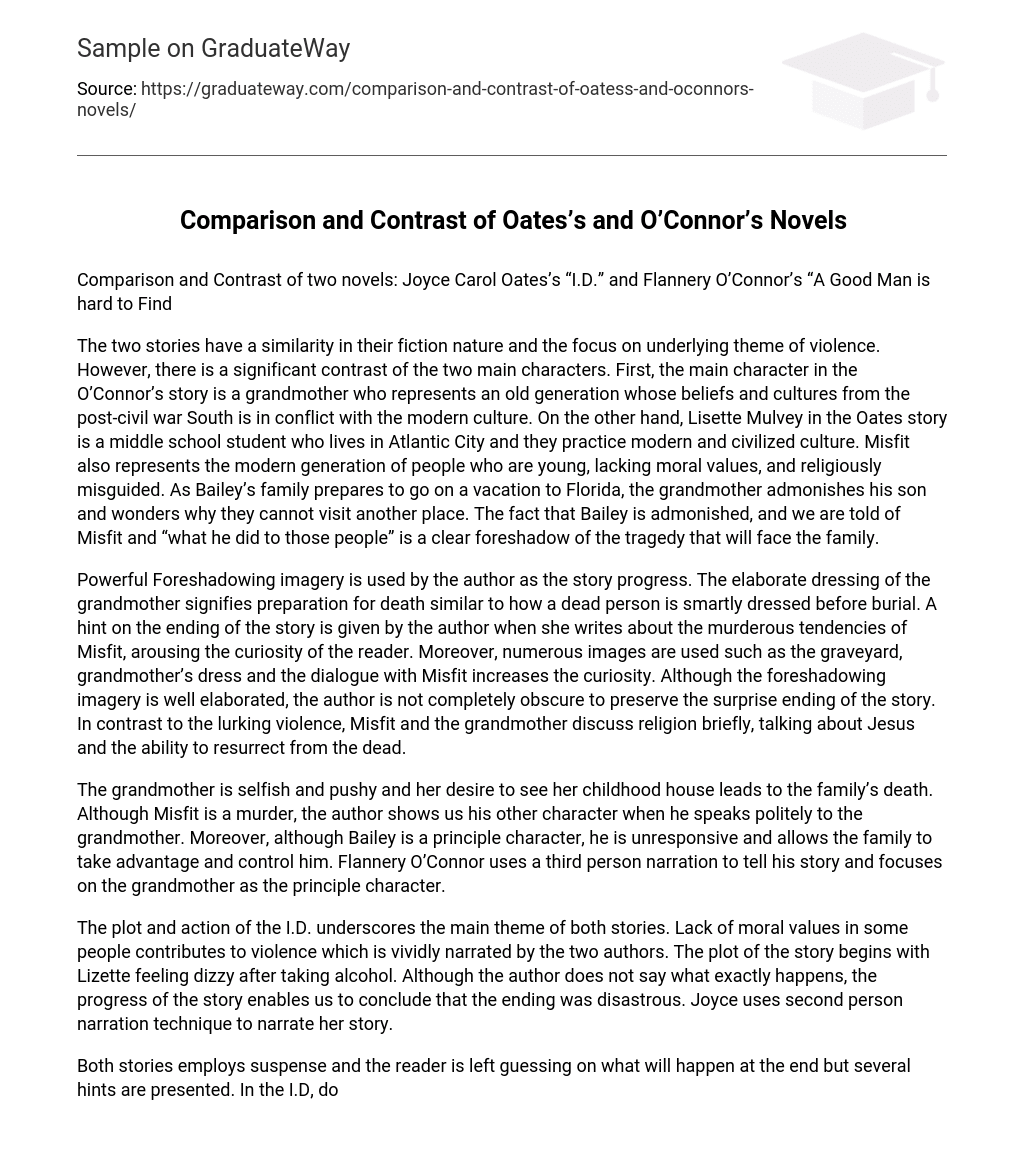Comparison and Contrast of two novels: Joyce Carol Oates’s “I.D.” and Flannery O’Connor’s “A Good Man is hard to Find
The two stories have a similarity in their fiction nature and the focus on underlying theme of violence. However, there is a significant contrast of the two main characters. First, the main character in the O’Connor’s story is a grandmother who represents an old generation whose beliefs and cultures from the post-civil war South is in conflict with the modern culture. On the other hand, Lisette Mulvey in the Oates story is a middle school student who lives in Atlantic City and they practice modern and civilized culture. Misfit also represents the modern generation of people who are young, lacking moral values, and religiously misguided. As Bailey’s family prepares to go on a vacation to Florida, the grandmother admonishes his son and wonders why they cannot visit another place. The fact that Bailey is admonished, and we are told of Misfit and “what he did to those people” is a clear foreshadow of the tragedy that will face the family.
Powerful Foreshadowing imagery is used by the author as the story progress. The elaborate dressing of the grandmother signifies preparation for death similar to how a dead person is smartly dressed before burial. A hint on the ending of the story is given by the author when she writes about the murderous tendencies of Misfit, arousing the curiosity of the reader. Moreover, numerous images are used such as the graveyard, grandmother’s dress and the dialogue with Misfit increases the curiosity. Although the foreshadowing imagery is well elaborated, the author is not completely obscure to preserve the surprise ending of the story. In contrast to the lurking violence, Misfit and the grandmother discuss religion briefly, talking about Jesus and the ability to resurrect from the dead.
The grandmother is selfish and pushy and her desire to see her childhood house leads to the family’s death. Although Misfit is a murder, the author shows us his other character when he speaks politely to the grandmother. Moreover, although Bailey is a principle character, he is unresponsive and allows the family to take advantage and control him. Flannery O’Connor uses a third person narration to tell his story and focuses on the grandmother as the principle character.
The plot and action of the I.D. underscores the main theme of both stories. Lack of moral values in some people contributes to violence which is vividly narrated by the two authors. The plot of the story begins with Lizette feeling dizzy after taking alcohol. Although the author does not say what exactly happens, the progress of the story enables us to conclude that the ending was disastrous. Joyce uses second person narration technique to narrate her story.
Both stories employs suspense and the reader is left guessing on what will happen at the end but several hints are presented. In the I.D, domestic violence is clearly elaborated where Lizette is badly hurt on the face after being threatened by her father, making her to run and fall badly. Another major difference between the two stories is the family bonding and union. Lizettes parent’s divorces and she is made to live with her mother while Bailey’s family is portrayed as having a strong bonding with the whole family going for vacations together.





